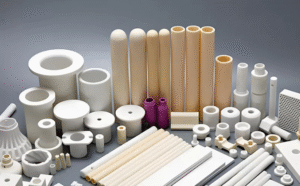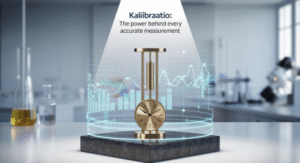
In today’s fast-paced, technology-driven world, precision is non-negotiable. Whether you’re operating advanced machinery, conducting scientific experiments, or manufacturing high-quality products, accurate measurements are critical. This is where kalibraatio, the Finnish term for calibration, comes into play. Calibration ensures that instruments deliver reliable, consistent results, preventing costly errors and boosting efficiency. Without proper kalibraatio, businesses risk defective products, safety hazards, or regulatory non-compliance. This article dives deep into the concept of kalibraatio, exploring its processes, benefits, and applications across industries. By understanding calibration, you’ll unlock the power of precision, ensuring your operations run smoothly and effectively. Let’s explore how kalibraatio transforms performance.
What is Kalibraatio
Kalibraatio refers to the process of adjusting and verifying the accuracy of a measuring instrument against a known standard. Essentially, it ensures that devices like thermometers, pressure gauges, or scales provide correct readings. For instance, a poorly calibrated scale might display incorrect weights, leading to errors in production or research. By comparing the instrument’s output to a reference standard, calibration identifies and corrects deviations. Consequently, businesses achieve reliable results, which are vital for quality control and compliance. Calibration is not a one-time task; regular kalibraatio maintains accuracy over time. In industries like healthcare, manufacturing, and aviation, precise measurements are paramount, making calibration indispensable.
Why is Kalibraatio Essential Across Industries?
Calibration plays a pivotal role in ensuring operational success. Inaccurate measurements can lead to defective products, safety risks, or financial losses. For example, in pharmaceuticals, improper kalibraatio of equipment could result in incorrect dosages, endangering lives. Similarly, in manufacturing, calibration ensures machinery operates within specified tolerances, reducing waste. Moreover, industries like aerospace rely on precise measurements for safety and performance. Regular kalibraatio also ensures compliance with international standards like ISO 9001. By investing in calibration, businesses enhance product quality, build customer trust, and avoid costly penalties. Ultimately, kalibraatio is the backbone of precision, enabling industries to deliver consistent, high-quality outcomes.
The Calibration Process: How Does Kalibraatio Work?
The kalibraatio process is systematic and precise. First, technicians select a reference standard with known accuracy, often traceable to national or international standards. Next, they measure the instrument’s output and compare it to the standard. If discrepancies exist, adjustments are made to align the device’s readings. For instance, a pressure gauge might be tweaked to match the reference value. After adjustments, the instrument is retested to confirm accuracy. Finally, a calibration certificate is issued, documenting the results. This process ensures reliability and traceability. Regular kalibraatio schedules prevent drift, where instruments gradually lose accuracy. By following this process, businesses maintain consistent performance and compliance.
Types of Calibration
Calibration varies depending on the instrument and industry. Common types include electrical, mechanical, thermal, and pressure calibration. Electrical kalibraatio focuses on devices like multimeters, ensuring accurate voltage or current readings. Mechanical calibration, on the other hand, applies to tools like torque wrenches or scales. Thermal calibration ensures thermometers or ovens maintain precise temperatures. Meanwhile, pressure calibration verifies gauges used in pipelines or industrial systems. Each type requires specialized standards and expertise. By choosing the appropriate kalibraatio method, businesses ensure their equipment performs reliably. Understanding these types helps organizations tailor calibration to their specific needs, enhancing efficiency and accuracy.
Tools and Standards Used in Kalibraatio
Effective kalibraatio relies on specialized tools and standards. Reference standards, such as certified weights or temperature sources, provide the baseline for comparison. These standards must be traceable to organizations like NIST or ISO. Additionally, technicians use tools like calibrators, signal generators, or deadweight testers to perform adjustments. For example, a deadweight tester ensures accurate pressure measurements. Software is often employed to automate and document the process, improving efficiency. By using high-quality tools and traceable standards, businesses ensure reliable kalibraatio. This not only enhances accuracy but also builds trust with regulators and customers, reinforcing the importance of proper calibration.
Benefits of Regular Kalibraatio
Regular kalibraatio offers numerous advantages. Firstly, it ensures measurement accuracy, reducing errors in production or research. For example, a calibrated thermometer provides precise readings, preventing costly mistakes in food processing. Secondly, calibration enhances product quality, boosting customer satisfaction. Additionally, it ensures compliance with industry regulations, avoiding fines or legal issues. Moreover, regular kalibraatio extends equipment lifespan by identifying issues early. For instance, a misaligned machine can be corrected before it fails. Finally, calibration improves safety by ensuring instruments operate within safe parameters. By prioritizing kalibraatio, businesses save costs, enhance efficiency, and maintain a competitive edge in their industries.
Conclusion
Kalibraatio is the key to precision, safety, and efficiency across industries. By ensuring accurate measurements, businesses reduce errors, enhance product quality, and maintain compliance. Regular calibration saves costs, extends equipment lifespan, and builds customer trust. Whether in healthcare, manufacturing, or aerospace, kalibraatio is non-negotiable for success. As technology advances, adopting innovative calibration solutions will further streamline processes. Don’t let inaccurate measurements hold your business back. Partner with a trusted calibration provider today and optimize your operations. Take the first step toward precision—schedule your kalibraatio now and unlock your industry’s full potential!
FAQs About Kalibraatio
What is kalibraatio, and why is it important?
Kalibraatio is the process of verifying and adjusting an instrument’s accuracy against a known standard. It ensures reliable measurements, which are critical for quality, safety, and compliance across industries like healthcare and manufacturing.
How often should instruments be calibrated?
Calibration frequency depends on usage, industry standards, and environmental factors. High-use equipment may need monthly kalibraatio, while others require annual checks. Consult manufacturers or experts for tailored schedules.
Can I perform kalibraatio in-house?
Yes, but in-house kalibraatio requires trained staff, traceable standards, and proper equipment. Many businesses opt for accredited service providers to ensure accuracy and compliance.
What happens if kalibraatio is neglected?
Neglecting kalibraatio can lead to inaccurate measurements, defective products, safety risks, and regulatory non-compliance. Regular calibration prevents these issues, ensuring operational efficiency.







